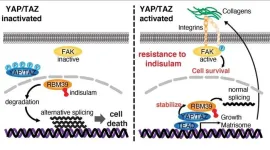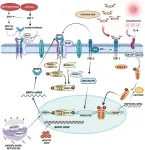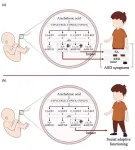A recently unveiled cardiovascular disease risk calculator that measures a patient’s risk for heart attack and stroke is better calibrated and more precise than its previous version, but if current treatment guidelines for cholesterol and blood pressure therapy remain unchanged, the new calculator may have unintended consequences, according to research from Harvard Medical School.
The analysis, published July 29 in JAMA, estimates that the new risk calculator would render nearly 16 million people newly ineligible under current treatment thresholds that guide clinical decisions about who should get cholesterol and blood pressure drugs. The change in treatment eligibility would be most pronounced among men between the ages of 50 and 69. The resulting decrease in access to statin and blood pressure therapy could lead to 107,000 additional heart attacks and strokes over 10 years, the analysis forecasts.
“The takeaway from our study is that updating risk estimation without reconsidering treatment thresholds has the potential to change recommended care for millions of Americans,” said study first author James Diao, a resident physician at Brigham and Women’s Hospital.
Thus, the unveiling of the new risk tool is a good opportunity to reconsider these risk thresholds, the researchers said.
“At its core, cardiovascular disease prevention has two elements — predicting risk and choosing when to treat in order to prevent a heart attack or a stroke, so I would be concerned if we only change one side of this equation without reexamining the other side, which is the treatment threshold,” said study senior author Raj Manrai, assistant professor of biomedical informatics in the Blavatnik Institute at HMS.
Periodic recalibration of risk estimates
Estimating an individual’s 10-year risk for having a heart attack or a stroke has been the cornerstone of efforts to prevent cardiovascular disease among healthy individuals and to avert its recurrence among those with previous heart attacks and strokes. Such individualized risk prediction, along with other public health measures, has propelled efforts to stem the toll of a condition that still claims more lives than any other disease in the United States and globally, despite major advances in diagnosis and treatment over the last several decades.
In November 2023, the American Heart Association unveiled the updated calculator, called PREVENT, which was developed using more recent data reflecting population changes and shifts in cardiovascular disease trends over the last 10-20 years. The new calculator provides 10-year risk estimates for patients ages 30 to 79 and 30-year risk estimates for patients between 30 and 59 years of age. Like its 2013 predecessor, the new tool includes standard cardiovascular measures such as cholesterol and high blood pressure, but it also incorporates new variables such as kidney function. Unlike the previous calculator, PREVENT excludes race in recognition of the notion that race is a social, rather than a biological construct. The new calculator also includes options for incorporating blood sugar, urine protein, and neighborhood zip code, and calls for initiating risk assessment at age 30 instead of 40.
The American Heart Association and the American College of Cardiology have not yet officially endorsed the new calculator, but some clinicians are already using the organization’s online calculator to guide patient care.
Forecasting the clinical effects of the new calculator
The researchers based their projections on nearly 7,700 participants ages 30 to 79 from the U.S. National Health Examination and Nutrition Survey and applied the 2013 and 2023 risk calculators to gauge risk and outcomes under each tool.
Based on this analysis, the researchers forecast that the new risk calculator would reclassify nearly half of U.S. population into lower risk categories. Very few people (less than 0.5 percent of the population) would be reclassified into higher risk categories under the new calculator.
The researchers then analyzed eligibility for statin and antihypertension treatment using current criteria, which call for treatment of most patients with intermediate and high risk and for a focused conversation for patients with borderline risk.
Under this new risk classification and the current treatment criteria, more than 14 million people would no longer qualify for cholesterol-lowering statins and 2.6 million would no longer qualify for medicines that control high blood pressure.
Medication changes
Under the new risk calculator, 67.5 million people would get recommendations for statin treatment, compared with 81.8 million under the 2013 tool. The greatest changes would occur among men, adults in their 50s and 60s, and Black individuals. The analysis also shows that, while PREVENT can estimate risk among younger patients (ages 30-79) compared with the previous calculator (calibrated for ages 40-79), very few younger people (ages 30-39) would qualify for treatment under the new risk tool. However, the researchers note, using the new risk calculator in the younger age group could still provide valuable long-term risk assessment, which could help lead to better monitoring and prevention.
The analysis also estimates that reduced use of cholesterol-lowering statins could cut the number of new-onset diabetes cases by nearly 57,000. Statins have been linked to heightened diabetes risk.
Under the new risk formula, 72.7 million adults would be eligible for blood pressure medications, compared with 75.3 million under the 2013 formula. The change would occur mostly among adult men, ages 50 to 69, and would affect Black patients more than white patients — 2 percent of Black adults would become ineligible for blood pressure treatment, compared with 1.4 percent of white adults.
Overall, 15.8 million people would become newly ineligible for statin and hypertensive treatment under the modified risk calculator, the analysis showed.
New heart attacks and strokes
To estimate the number of future heart attacks and strokes stemming from this change, the researchers calculated the magnitude of risk reduction that would disappear from lack of preventive therapy among newly ineligible patients. In other words, they estimated the number of heart attacks and strokes that would no longer be prevented in the absence of treatment.
The authors estimated that, over the next 10 years, new medication ineligibility could result in heart attack or stroke among 107,000 individuals.
The removal of race from the recalibrated calculator would assign lower risk to more Black Americans and render more of them ineligible for therapy, compared with the previous version of the calculator, which did include race as a risk magnifier. But the analysis did not project a disproportionate rise in heart attacks and strokes in newly ineligible Black Americans, compared with White Americans. This surprising finding, the researchers note, likely stems from preexisting disparities in access to preventive cardiovascular care. What this means, the researchers said, is that because many Black individuals are not getting the preventive benefits of stains and blood pressure therapy in the first place, they would not experience a rise in cardiovascular events from loss of eligibility.
“We thought that if Black individuals became disproportionately less eligible for statins, they would be projected to have disproportionately more heart attacks and strokes, but our data did not reflect this expectation,” Diao said. “We think this may be because fewer Black Americans have access to these medications and to recommended care to begin with. That’s a clear case of two wrongs don’t make a right.”
To treat or not to treat
Risk thresholds matter a lot at the population level and their effect on care decisions is real, the researchers said, but, at the individual level, the decision to treat should always go beyond a risk calculator because no risk equation, no matter how accurate, will capture perfectly every patient’s risk.
Individualized risk assessment and treatment choice, the researchers noted, should go beyond plugging variables into a digital calculator. Calculating a patient’s risk is an important first step, but that risk should be further individualized as the physician gets additional details from the patient, including family history, lifestyle, and other conditions that may fuel cardiovascular illness but may not be necessarily captured in the risk calculator. Similarly, it is important for physicians to understand the patient’s values — their willingness to accept higher or lower risk versus their tolerance for possible side effects from treatment.
“The sort of nuanced decision-making that needs to occur at the physician’s office means that after a careful conversation, two people with the same estimated level of risk might end up on different treatment regimens,” Manrai said. “And that’s a good thing.”
Authorship, funding, disclosures
Co-authors include Ivy Shi, Venkatesh Murthy, Thomas Buckley, Chirag Patel, Emma Pierson, Robert Yeh, Dhruv Kazi, and Rishi Wadhera.
The work was funded in part by the National Heart, Lung, and Blood Institute under award K01HL138259.
Murthy reported receiving personal fees from Ionetix, INVIA Medical Imaging Solutions, and Siemens Healthineers; grants from National Institutes of Health and American Heart Association outside the submitted work; owning stock in General Electric, Cardinal Health, Pfizer, Amgen, Merck, and Johnson & Johnson; having stock options in Ionetix; being a paid consultant for INVIA Medical Imaging Solutions and Siemens Healthineers; receiving research support through his institution from Siemens Healthineers; and being supported by the Melvyn Rubenfire Professorship in Preventive Cardiology. Kazi reported receiving grants from National Heart, Lung, and Blood Institute (NHLBI) outside the submitted work. Wadhera reported receiving grants from NHLBI and personal fees from Abbott. and Chamber Cardio outside the submitted work. Dr Manrai reported receiving grants from NIH/NHLBI during the conduct of the study. No other disclosures were reported.
END





